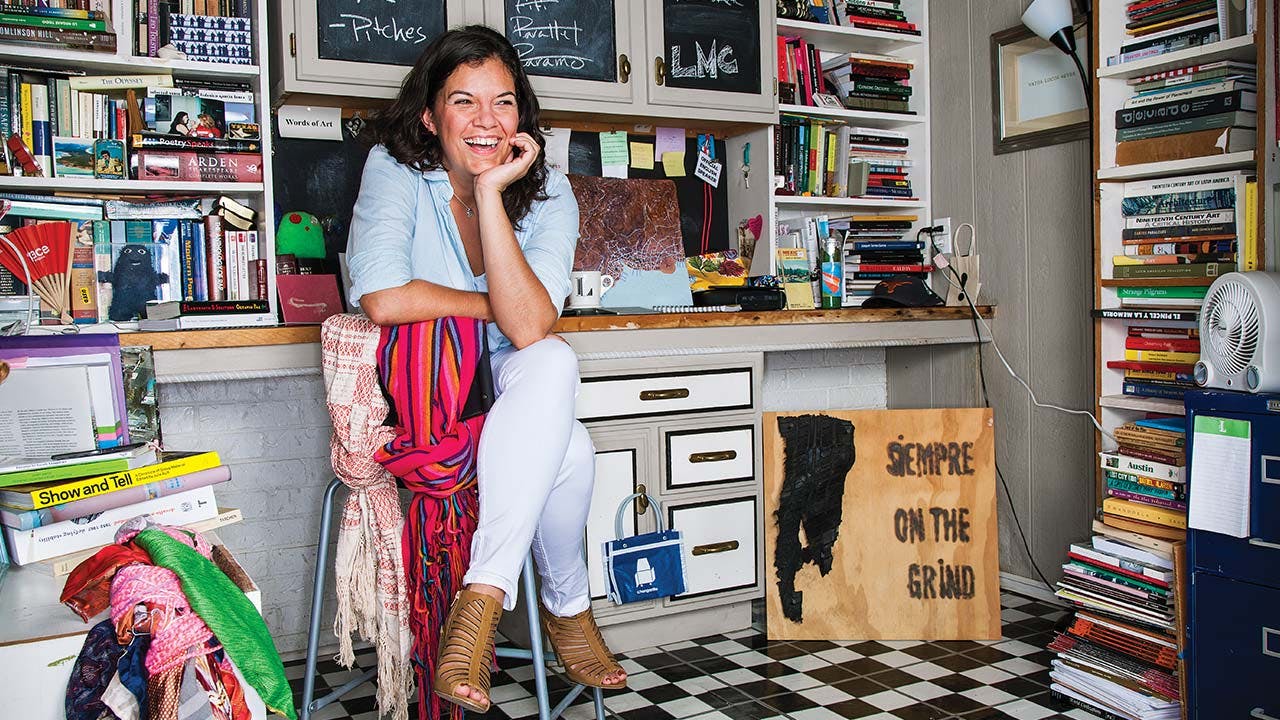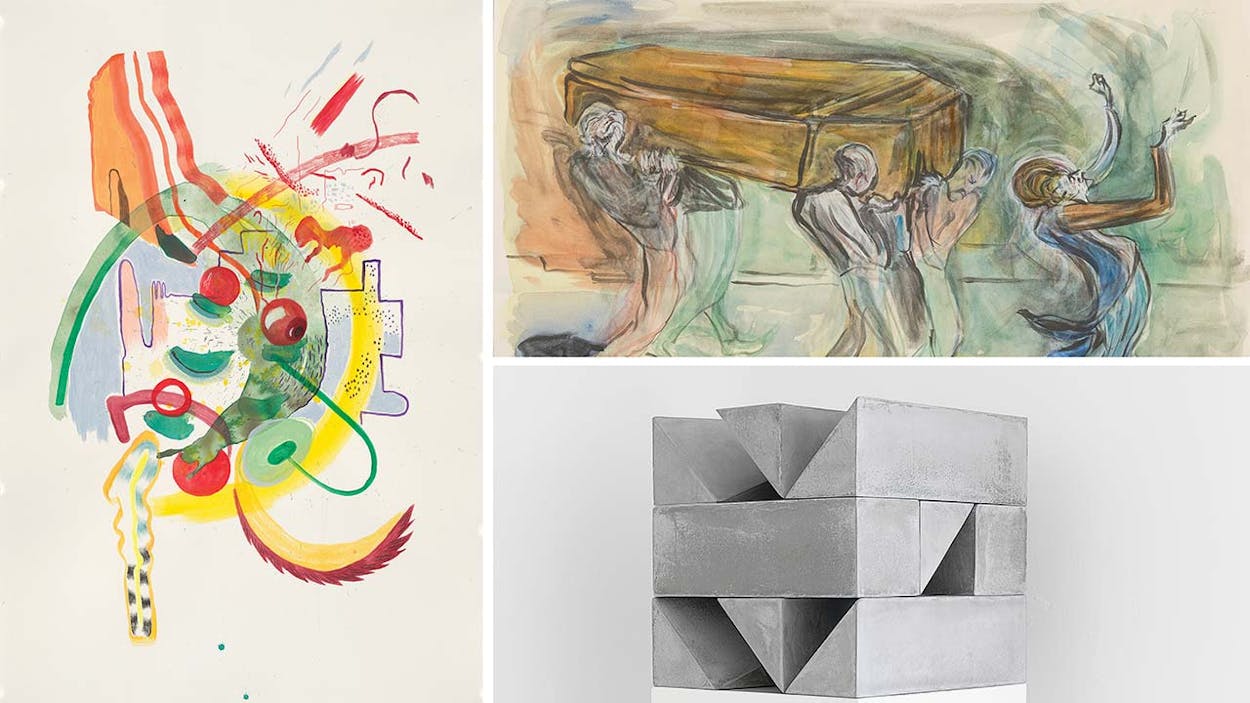When Leslie Moody Castro moved to Mexico City, in 2004, she quickly fell in love with the frenetic metropolis and its edgy contemporary-art scene. When she’d return home to Texas to see friends and family, however, all anyone seemed to know or care about when it came to Mexican art were two big names from the early twentieth century: Diego Rivera and Frida Kahlo.
The American mania for Rivera and Kahlo is understandable. With their epic murals of postcolonial struggle and intimate portraits of feminine self-mythology, respectively, they’re endlessly fascinating, even perhaps deserving of their exaggerated preeminence among Mexican artists. The problem, as Moody Castro saw it, was incuriosity about the present. Rivera and Kahlo were born over a hundred years ago; the sense of Mexican life that Americans drew from their work had little to do with the post-NAFTA city where Moody Castro lived, much less the art galleries where she worked. The Mexico City she had been getting to know was diverse and cosmopolitan, always abuzz over the next experimental artist-run space or transnational collaboration. Yet on those visits to her hometown of Austin, she’d be asked first about Rivera and Kahlo—and then about whether Mexico City had electricity.
“I realized that there was this huge disconnect, and I wanted to challenge that,” Moody Castro says. “The scene in Mexico City, especially in the art world, is so unbelievably international.”
Twelve years later, as she prepares to open the second annual installment of “The Other Mexico,” her curatorial project for the Texas Contemporary Art Fair, in Houston, Moody Castro sees real progress. “Mexico and Texas are really starting to talk to each other, to share history and make strong connections and networks that can support each other,” she says. “That should have happened a long time ago. Yes, there is a physical border, but there’s no reason there has to be an ideological border.”
Much of this progress is due to the hard work of people like Moody Castro. But it’s also an inevitable result of a globalizing art economy pushing together two societies that have always fraternized as much as they’ve skirmished. These days, amid widespread talk of wall-building and renewed criticism of globalization from both the left and the right, Moody Castro’s work feels more important—and more fraught—than ever.
Houston in particular has recently begun to emerge as a world center for viewing, studying, and buying Mexican art. Nowhere are the fruits of this cross-pollination more visible than at “The Other Mexico,” which last year brought work from seven cutting-edge Mexico City galleries and artist-run spaces to Houston. This year, Moody Castro will present a new group, with five exhibitors and perhaps a dozen artists from places such as Oaxaca and Monterrey to an audience of more than 13,000 over the course of four days. Artworks will be sold, cellphone numbers and business cards will be exchanged, and future travel plans will be suggested—all part of a phenomenon that’s mutually beneficial for Mexico, which is rich in art history, and Houston, which is rich in art dollars.

“I have a really weird sense of geography,” says Moody Castro, who was born in Edinburg, grew up in Austin with occasional visits to the Valley, and now spends much of her life flying back and forth between Mexico and various Texas cities. “I consider Mexico and Texas one big place. Since I travel so much between the cities, I don’t think of it in terms of borders. I think of it as one big conversation.”
That conversation—often cacophonous and diverse to the point of breakdown and fragmentation—is the inspiration for “The Other Mexico,” which takes its name from the title of a book-length essay by the Mexican writer Octavio Paz. In The Other Mexico, Paz characterized the dynamics of the relationship between the United States and Mexico with well-earned cynicism. “The North Americans are outstanding in the art of the monologue: they are eloquent and they also know the value of silence,” he wrote 48 years ago. “But conversation is not their forte: they do not know how to listen or to reply.” At the time of Paz’s book, not a single major American art museum featured a department dedicated to Latin American art.
That line of conversation has since begun to open up, with Texas leading the way. In 1988 Austin’s Archer M. Huntington Art Gallery—now known as the Blanton Museum of Art—hired curatorial dynamo Mari Carmen Ramírez to launch the first-ever Latin American art department in a U.S. museum. Since then, museums in cities like London and New York have followed suit. These days, Ramírez is ensconced at the Museum of Fine Arts, Houston, heading the International Center for the Arts of the Americas (ICAA), which has been doing in-depth research on Latin American art.
It’s the work of pioneers like Ramírez and others, including María Inés Sicardi, of Montrose’s Sicardi Gallery, that has prompted the art world to pay attention to what is happening in Houston. “Mari Carmen’s exhibitions travel to the Tate Modern [in London]; it’s that level,” says Allison Armstrong Ayers, a partner in Sicardi Gallery.
Ramírez, for her part, credits much of Houston’s growing international credibility to her team of researchers at the ICAA, who have created a unique digital archive of primary documents of Latin American and Latino art history. Since 2004 the team has gathered and digitized materials in sixteen cities, from old flyers announcing the manifestos of radical artist groups in Buenos Aires to records of French surrealist André Breton’s travels in Mexico. These days, the ICAA is partnering with Yale University Press to print selections from this massive archive in a thirteen-book series, Critical Documents of 20th-Century Latin American and Latino Art, the first comprehensive collection of its kind.
“All of that work has been done from Texas,” Ramírez says. “I think artists consider Houston the most serious place for scholarship and collection-building of Latin American art”—a claim that might startle more than a few Miami and Los Angeles art-world movers and shakers.
At the same time that Latin American art broadens Houston’s international profile—apart from “The Other Mexico,” the Texas Contemporary Art Fair remains an event of mostly regional significance—the city provides a welcome market for Mexican artists and art dealers who have been affected in recent years by the violence associated with the drug wars. “Not everyone is comfortable with traveling to Latin America,” Ayers says. “Art fairs bring the work to everyone.”
As is the rule with globalization, the discrepancies between local and far-flung markets can lead to eye-popping cost comparisons. “The prices of our artists are way lower than what buyers are used to seeing in Houston,” says Mexico City gallery owner Enrique Guerrero, who took part in the inaugural exhibition of “The Other Mexico.” Guerrero, who travels to half a dozen or so fairs every year in Europe, Asia, and the Americas, says he makes about half of his sales abroad.
In fact, Guerrero was so impressed by his visit to Houston—he was astonished that people who came by his booth invited him to their homes—that he will return to this year’s Texas Contemporary (though not as part of “The Other Mexico”). He’s even taking steps to open a permanent satellite gallery in Houston. “Houston is like Mexico City twenty years ago, when I first opened,” Guerrero says by phone from his office near the Bosque de Chapultepec. “It’s a very enthusiastic place. You have people interested in what’s going on not only in Houston but abroad as well.”
The fact that Guerrero’s artists will work for less than their American counterparts doesn’t mean that he, to paraphrase an oft-repeated political line from 2015, “isn’t sending his best people” across the border. Quite the opposite. At last year’s fair, Guerrero presented work by Miguel Ángel Madrigal, an emerging member of Mexico’s younger, more international generation of artists. Madrigal’s work makes borders dissolve, allowing us to imagine the strange and beautiful interior of a region our eyes would otherwise never penetrate. Madrigal built an angular crevasse into the floor of Guerrero’s exhibition booth and filled it with fantastical, miniature architectural elements, creating a “visible city,” as he has called his work, in homage to the Italian fabulist writer Italo Calvino. People lined up to take photos of themselves on the floor next to Madrigal’s installation, Guerrero says, and word of the exhibit spread rapidly through social media. This year, Guerrero will be back with new work by Madrigal that involves similar architectural dioramas set inside shipping containers, a nod to the magical, temporary cities conjured out of thin air at international art fairs.
Beatriz Zamora, another of Guerrero’s artists, is an 81-year-old painter who has been working solely in black since 1978. In contrast to Madrigal, the budding internationalist, Zamora represents a frustrated generation of Mexican artists who came of age in the sixties and seventies. Her opaque and obscure works echo the fate of a Cold War–era avant-garde that was officially ignored within Mexico, buried under second-rate imitators of the muralist tradition, and overlooked abroad. Only now is she getting the international attention she deserves. “A lot of people still think of Mexican art as folk art—a lot of color, a lot of flowers, Frida Kahlo, Diego Rivera,” Guerrero says, echoing Moody Castro’s line of criticism. In Houston last year, however, the conversation was moving forward. “People were fighting over Zamora’s black paintings,” Guerrero says. “They didn’t know who she was, but the fact that she was eighty and has been doing this since 1978, they were thinking, ‘There are things happening in Mexico that are not flowers!’ ”
It’s a sight that brings joy to Moody Castro’s heart as well—not just because her fellow Texans are finally seeing past Frida and Diego but also because her home state is solidifying its place on the international art map and helping Mexico do the same. “Both of my places,” she says, “are finally getting the recognition they deserve.”
“The Other Mexico” runs from September 29 to October 2 at the George R. Brown Convention Center.







